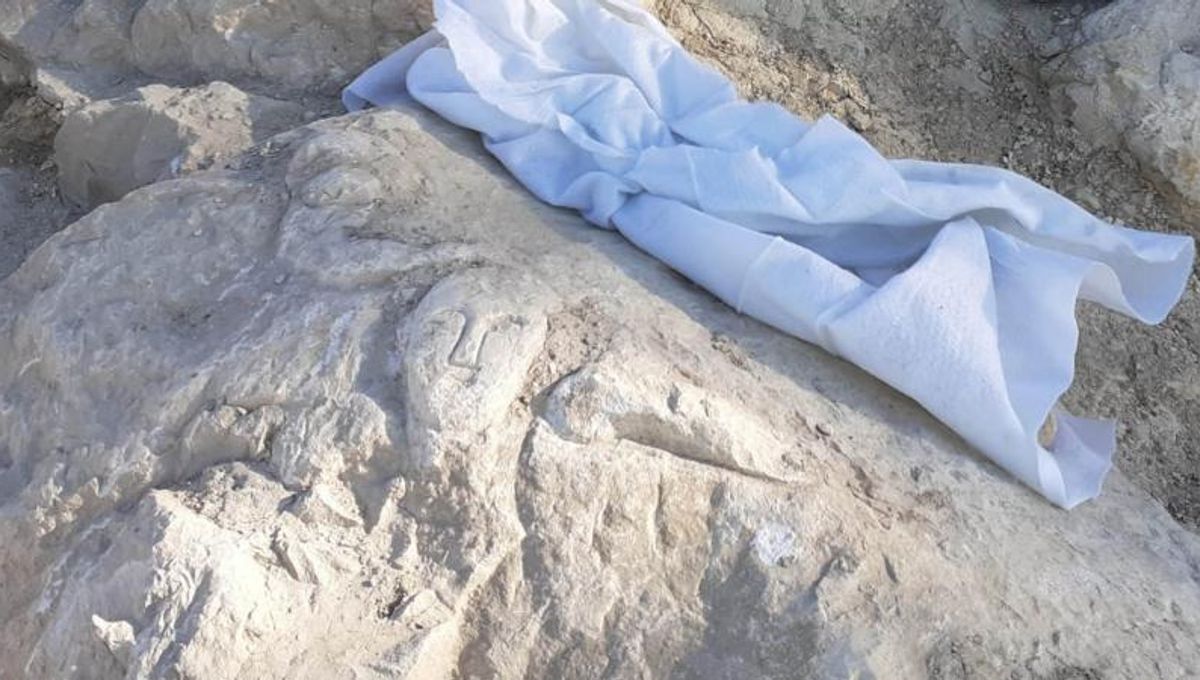
Bad weather has unveiled previously hidden stone carvings of a phallus, a face, and a cornucopia at a Roman fort in eastern Spain.
Tossal de La Cala is a ruined Roman fort, or “castellum”, located on top of a cliff on the coast of Benidorm. It was first built around 77 BCE and was occupied by the armies of the famous general and statesman, Quintus Sertorius. The fort was part of a network of similar sites located along the coast to monitor and defend the area during the Sertorian wars, a civil war fought by rebels against the Roman government. The site was first excavated in the 1940s by a priest called Father Ignacio Maria Belda and later by Professor M. Tarradell, in 1965.
The three newly discovered carvings, which make up a relief, had remained hidden until January 2020, when heavy rain exposed them for the first time. However, archaeologists and the City Council decided to keep them quiet until now to “ensure the protection of the relief,” according to a statement from the city of Benidorm.
The carvings, which appear on a rock, were probably made around 2,000 years ago by one of the fort’s inhabitants. The composition occupies a space of about 57 by 42 centimeters (22.4 by 16.5 inches) However, Jesús Moratalla, an associate professor of archaeology at the University of Alicante and a director of excavations believes the scene may be incomplete since the upper right quadrant is missing. According to Mortalla, the relief is of exceptional historical importance.
Ana Pellicer, the Councilor for Historical and Cultural Heritage in Benidorm, explains that this find is unique “since there are no [known] references to similar engravings and reliefs” in territories that were previously held by Roman occupation.
What is currently unknown, however, is the purpose of these carvings. The images may simply be graffiti produced by someone at the fort, or they may have served a more deliberate ritualistic function. Phalluses, for example, are commonly depicted on Roman objects and art – from amulets to frescos – as they were symbols of luck, fertility, and a ward against evil spirits. The wearing of phallic charms was so common in fact, that Pliny the Elder remarked how even male babies and soldiers wore them to encourage divine protection. Pliny called them medicus invidiae or “doctors against the evil eye”.
Equally, the cornucopia, or “horn of plenty”, was another symbol of good fortune appearing in Ancient Greek and Roman mythology and art. Explanations for its origins vary, but according to Ovid’s Metamorphoses, the Greek demigod Heracles (Hercules to the Romans) tore the horn from the head of a river god called Achelous before giving it to the Naiads, who used it to produce an endless supply of food.
Now that the carvings have been announced to the public, the team excavating the fort hope “to seek solutions that allow it to be exhibited with the maximum guarantees without separating it from Tossal”.
Source Link: "Unique" 2,000-Year-Old Roman Phallus, Face, And Horn Carving Discovered In Spain